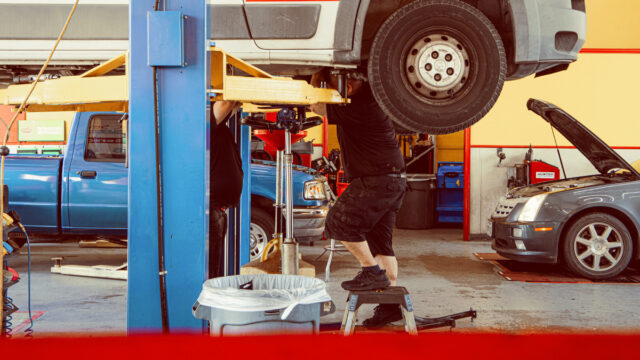Did you know tire balancing could expand your tire life span by 20-50%? Talk about saving time and money! Tire balancing is one of those maintenance tasks that often goes unnoticed until something feels off, like a vibration in the steering wheel or uneven tire wear. But catching these signs early can save you from bigger headaches down the road. As you review this blog, you will learn the telltale signs that your tires need balancing, why it is important to address the issue promptly, and how staying on top of tire care can make a noticeable difference in your driving experience.
What is Tire Balancing?
Tire balancing is all about making sure your tires wear evenly, and your ride stays smooth. When your tires are balanced, they evenly distribute the weight of your vehicle, which helps avoid annoying vibrations and uneven tire wear. If your tires are off-balance, you might notice some wobbling or hear strange noises. Balancing corrects these issues by adjusting how the weight is spread across the tire, so your car drives smoothly and comfortably.
Here is a quick rundown of what happens during the balancing process: A mechanic mounts your tires on a balancing machine, which spins them to detect any imbalances. If the machine finds that the weight is not evenly distributed, the mechanic adds small weights to the rim to correct it.
Key Signs Your Vehicle Needs Tire Balancing
- Vibrations While Driving: If you’re feeling vibrations through the steering wheel or your seat, particularly at higher speeds, it’s likely a sign that your tires need balancing. This shaking can come from improper wheel balance, uneven tire wear, or out-of-round tires. It might also be due to smaller issues like separated tire tread, damaged wheels, or loose lug nuts.
- Uneven Tire Wear: The easiest way to spot the need for tire balancing is through a quick visual inspection. If you notice differences in tread life, like one side of the tire wearing down faster than the other, it’s a strong sign that your tires may be unbalanced. You can even use the penny test to check the tread depth: insert a penny into the tread with Lincoln’s head facing down. If you can see the top of his head, it’s time to get your tires checked for balance and alignment.
- Steering Issues: If you notice your steering wheel wobbling, pulling to one side, or vibrating excessively, unbalanced tires could be the culprit. These problems might make driving feel less controlled and more challenging. While a vibrating steering wheel can sometimes indicate a problem with your power steering, it’s more commonly associated with issues like misaligned wheels.
- Noisy Tires: If you start hearing odd noises from your tires, like a rhythmic thumping or a constant hum, it’s worth paying attention. These sounds often indicate that your tires are out of balance or unevenly worn. As the noise gets more noticeable, it’s a sign that the issue might be getting worse.
Why You Shouldn’t Avoid Tire Balancing Maintenance
Putting off maintenance might seem like the easiest way to go about things, after all, who wants to deal with the hassle of car repairs? But when it comes to tire balancing, skipping this step can lead to more than just a bumpy ride. Don’t put yourself and others at risk, make sure you pay attention to these potential consequences:
- Reduced Fuel Efficiency: When your tires are unbalanced, your engine must work overtime to keep your car moving, leading to increased fuel consumption. This means you’ll find yourself making more trips to the gas station, and with today’s gas prices, no one wants that.
- Tire Replacement: Unbalanced tires wear unevenly, often creating bald spots or excessive wear on one side. This doesn’t just shorten their lifespan; it also means you’re more likely to deal with blowouts or flats, forcing you to replace them sooner.
- Safety Risks: The most obvious concern is the safety hazards of avoiding this type of maintenance. Unbalanced tires can mess with your vehicle’s stability, making it harder to control, especially at higher speeds or during sudden traffic maneuvers.
When and How to Get Tire Balancing Done
Tire balancing isn’t something you think about every day, but it’s crucial for a smooth and safe ride. A good rule of thumb is to check your tire balance every 5,000 to 6,000 miles, or whenever you rotate your tires. But if you start noticing any of the signs we talked about like vibrations, uneven tread wear, or strange noises, it’s time to act. Don’t wait until it gets worse; addressing these issues early can save you a lot of headaches down the road.
At Kwik Kar, we get that life’s busy and vehicle maintenance can sometimes slip down the priority list. That’s why we make tire balancing quick and hassle-free. Whether you’re dealing with a shaky steering wheel or just want to stay ahead of potential problems, our experts are ready to keep your tires and your ride in top shape. Give us a call or stop by today, and we’ll make sure you’re back on the road with confidence.

